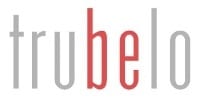In Hans Christian Andersen’s classic tale, The Emperor’s New Clothes, an entire kingdom is caught in the grip of conformity, as everyone—from the emperor to the common townsfolk—pretends to see garments that are not actually there, all because they fear admitting a different, potentially embarrassing truth. This story paints a vivid picture of the perils of groupthink and the dangers of unchallenged acceptance, making it a perfect allegory for our everyday personal and professional lives that reward comfort and conformity over the disruptive challenges required for true innovation.
So why is fostering innovation and being innovative so challenging? Let’s explore why breaking away from the accepted patterns—much like shattering the illusion of the emperor’s new clothes—is crucial for any individuals and organizations aiming to lead in a rapidly evolving world and create a brighter future.
1. The Necessity of Failure in Innovation
Innovation is inherently tied to risk-taking and, inevitability, making  mistakes. The path to groundbreaking discoveries is paved with failures—the question is not if, it is, how many? While no one enjoys being wrong, the path to something truly new and impactful requires an acceptance, and even an embrace of, failure.
mistakes. The path to groundbreaking discoveries is paved with failures—the question is not if, it is, how many? While no one enjoys being wrong, the path to something truly new and impactful requires an acceptance, and even an embrace of, failure.
Overcoming the Fear of Failure:
- Cultivate a Growth Mindset: Encourage the view that each failure is a step towards learning and ultimate success. Shift the focus from outcomes to processes.
- Celebrate Failures: Implement practices such as ‘failure debriefs’ where lessons are shared, not to assign blame, but to improve future innovation efforts.
- Allocate Resources for Experimentation: Provide teams with the resources and time to experiment without the immediate pressure of results.
2. Challenging the Past & Present
True innovation means letting go of past and current success and starting fresh. While we must respect and recognize all the good (and bad) that created our current reality, these experiences and achievements can also prevent us from making the critical decisions and taking the necessary actions to innovate. This is perhaps one of the toughest challenges because we must admit what got us here, won’t get us where we want and need to be. Current success is no guarantee for future survival and growth.
Strategies to Reject the Existing State:
- Regular Innovation Audits: Evaluate current products and services for their future viability and explore potential innovations that could replace them.
- Encourage Dissenting Opinions: Create forums where employees at all levels can challenge current practices and propose new solutions without fear of retribution.
- Reward Innovative Thinking: Recognize and reward employees who bring forward ideas that challenge existing successful products or processes.
3. Embracing the Unpredictability of Innovation
Innovation radiates in bursts of insight and creativity. These flashes of brilliance are unpredictable and can be challenging to manage and nurture. Individuals and organizations want predictable, linear growth. If we do x, we get y. More of x proportionately results in more of y. The problem is, innovation is not a linear formula. It is more of a scatterplot in the beginning, with the results, incoherent and unpredictable. But when innovation hits, the growth is exponential.
Managing Innovation’s Sporadic Nature:
- Keep an Idea Repository: Encourage employees to record all ideas, no matter how raw, in a shared digital space accessible to all relevant team members.
- Develop Rapid Prototyping: Quickly build models or simulations of new ideas to visualize and test their feasibility.
- Foster Cross-Disciplinary Teams: Create teams from diverse backgrounds to increase the variety and frequency of innovative ideas.
4. Building Trust and Faith in Innovation
Innovation requires a leap of faith, both in terms of individual confidence and organizational support. Trust me is never received as the reassuring message it is intended. Yet when the big idea is still floating in the ether, hope and faith are all we have to guide us through the darkness. Belief in the people and process is the light until the innovation becomes the beacon. The trust required to foster and cultivate innovation, especially in environments driven by traditional metrics of success, is often the barrier between innovating and perpetual pivoting.
Fostering Trust and Faith:
- Transparent Communication: Regularly share the development process, successes, and failures of innovative projects with all stakeholders.
- Leadership Endorsement: Have leaders within the organization actively participate in and champion innovative projects.
- Create Safe Spaces for Innovation: Develop areas within the business where traditional ROI calculations do not stifle new ideas.
5. Innovation from Discomfort
While stability is safe and comforting, disappointment, discomfort, and, all too often, desperation are what drive innovation. We want calm waters and smooth seas, but the chop, the turbulence, the discomfort in whatever form, is what pushes us beyond our comfort zone, where innovation lies. Human nature seeks to relieve discomfort, but we can’t be too swift in eradicating it. Discomfort is a wonderful motivator and teacher. We must learn to sit with it. Recognizing our challenges and wanting to change does not mean we are negative. It means we are human…and a transcendent part of our human experience is being able to transform our mistakes and misfortune into magical solutions.
Leveraging Discomfort for Innovation:
- Encourage Risk-Taking: Normalize stepping out of comfort zones as a part of job roles, and ensure that taking risks is seen as part of the norm.
- Stress Test Your Environment: Regularly put your team in ‘what if’ scenarios to simulate discomfort and encourage thinking outside the box.
- Reward Courage: Acknowledge and reward those who lead projects that stretch the company’s current capabilities or market position.
Challenge Perceptions & Norms
Just as the child in Andersen’s story disrupts the norm by innocently proclaiming that the emperor is wearing nothing at all, innovation requires speaking out and challenging existing perceptions and workflows. These voices push boundaries and inspire change, transforming the plain and mundane into creative and innovative.
The path to innovation demands courage, resilience, and a willingness to embrace the unknown. By understanding and addressing the inherent challenges of innovation, we can better equip ourselves, our teams, and our organizations to break new ground. Let’s make the leap from the safe and predictable to the risky and uncertain, not just to survive but, more importantly, to thrive in the future. Go out there and fail…we’ll all be better for it.
Contact Us
If your organization is ready to take this journey but you’re unsure where to start, reach out for a consultation. Let us help you navigate the challenges of innovation and transform your creative potential into tangible success.
Doug Cooper is a leader, innovator, and creator with over 25 years of experience in developing and managing both business, creative, and transformation strategy projects and products and an award-winning author of three adult fiction and one children’s book. Effective communicator and influencer at all levels of organizations and across cultures with proven achievement in US domestic as well as 20+ countries in Europe, Asia, Australia, and South America.
